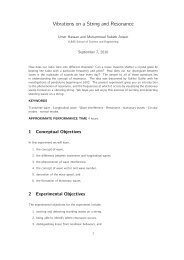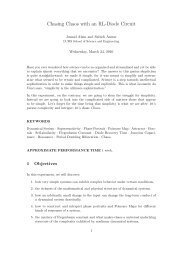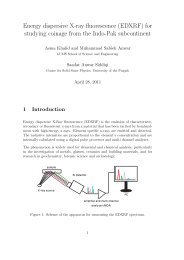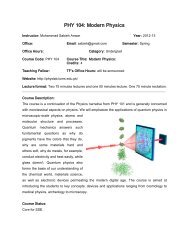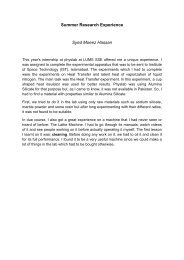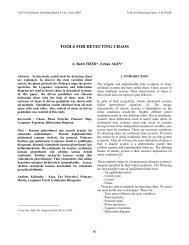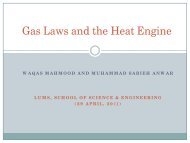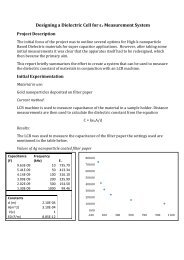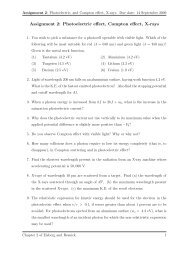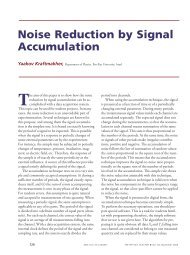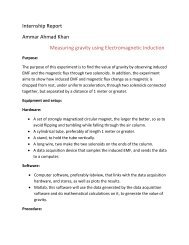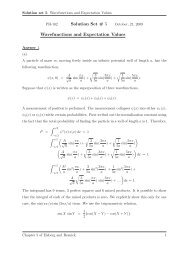Energy dispersive X-ray fluorescence (EDXRF) - Experimental Physics
Energy dispersive X-ray fluorescence (EDXRF) - Experimental Physics
Energy dispersive X-ray fluorescence (EDXRF) - Experimental Physics
You also want an ePaper? Increase the reach of your titles
YUMPU automatically turns print PDFs into web optimized ePapers that Google loves.
inbetween, in the detector’s Be window or in the intervening air. The primary<br />
consequence is that the sensitivity of the system is reduced at lower and<br />
higher energies. To obtain accurate relative intensities, the software must<br />
correct for these losses.<br />
3. Finite energy resolution of the detector<br />
The detector has a finite energy resolution, resulting in broader peaks, approximating<br />
to the Gaussian shape. The broadening largely arises from two<br />
physical effects: statistical fluctuations in charge production (Fano factor)<br />
and electronic noise at the preamplifier input. The primary consequence of<br />
finite energy resolution is spectral interference, i.e., overlapping peaks. For<br />
example, the Fe K α peak and the Ni K α peak interfere to an extent. Both<br />
can be detected, but to determine the net area of each, the issue of overlap<br />
must be addressed. The software cannot simply obtain net counts in some<br />
region but must deconvolve the spectrum, fitting it to a sum of separate<br />
peaks.<br />
4. Bremsstrahlung and scattering<br />
The X-<strong>ray</strong> tube also emits Bremsstrahlung X-<strong>ray</strong>s over a wide energy range.<br />
Some X-<strong>ray</strong>s from the tube will undergo Compton (inelastic) scattering and<br />
some will undergo Rayleigh (elastic) scattering from the sample into the<br />
detector. This will form a continuum around a Ag peak. A filter is usually<br />
required to be placed in front of the tube to reduce backscatter at the energies<br />
of primary interest.<br />
5. Environmental interference There are always various materials in the<br />
vicinity of the detector. X-<strong>ray</strong>s will interact with these elements, producing<br />
environmental interferences, characteristic X-<strong>ray</strong> peaks and a scattering<br />
continuum. For example, argon in the air produces a peak at 2.96 keV and<br />
aluminum in the detector package produces a peak at 1.48 keV [9].<br />
3.3 Mathematical model for calculating elemental concentrations<br />
In XRF analysis, the Sherman equation [10] is of chief importance and it describes<br />
quite nicely the relationship between the measured intensities emitted by a specimen<br />
and its composition. Jacob Sherman, in 1955 published a detailed demonstration<br />
of an equation enabling one to calculate theoretical net X-<strong>ray</strong> intensities<br />
emitted by each element from a specimen of known composition as it is irradiated<br />
by polychromatic X-<strong>ray</strong> beam. This equation can be written in the form,<br />
I i = f(C i , C j , C k , . . . , C N ) (1)<br />
where I x and C x are the net intensity and the concentration of the N elements<br />
present in the sample. Unfortunately, this equation is not invertible. The inverse,<br />
C i = g(I i , I j , I k , . . . , I N ) (2)<br />
8



